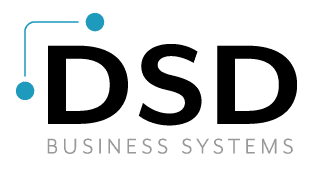8 Time Saving Tips for Month End

“Time waits for no one” is what my grandmother used to say. Living the farming lifestyle, time was of the essence most days, since she only had a certain amount of daylight to get work done. In the accounting world, time is of the essence as well, with month end closing and getting monthly numbers to the CFO by a certain date. Availability and timeliness of financial information is critical to running a business. Budgets, planning, investing, forecasting, hiring, firing, and bonuses all rely on the timeliness of financial information.
Monthly closing is the processing of transactions (AR billing, AP invoices), journal entries and preparing financial statements to get an accurate ending picture of the month’s financial activity. Most businesses use the standard calendar month for this, though annual dates can differ. Some have the typical calendar fiscal year (January thru December), while others have a specific fiscal year (October thru September).
Since time is of the essence, here is a list of 8 time saving tips that have been helpful in improving our closing process.
- Checklist: Whether you oversee one part of closing or the full cycle, a checklist has been the most helpful item for me. It helps to plan for what I can do at different stages. I have items that can be done during the month, the first week of closing and after closing. Here is a brief snapshot of my checklist.
| Action | Action Date | Completed |
| Recurring Journals | By the 25th of current month |
|
| Accrue Fixed Fee Revenue | Before Closing | |
| Internal Cash Receipts | Before Closing | |
| Amex Statement | Before Closing | |
| Bank Rec – General | By the 3rd | |
| Bank Rec – Payroll | By the 3rd | |
| Commission | By the 7th | |
| GL reconciliations | By the 11th | |
| Financial Information to COO | By the 13th |
- Recurring Journals: This process can be your best friend for month-end. I have close to 150 entries for each month. I found that using recurring journals is a good checkpoint for making sure we get expenses or revenue in correct months, especially from vendors that lag on getting us timely invoices. I use recurring journals for 3 areas:
- Allocate pre-paid expenses over a time period
- Insurance, Annual Fees or Subscriptions
- Allocate deferred revenue over a time period
- Pre-paid support plans
- Expense monthly items which normally do not change
- Rent, utilities, leases
- Allocate pre-paid expenses over a time period
- Blackout Days: This is something our COO put in place a couple years ago so that the Administrative team could have 2 days to fully concentrate on getting our month-end duties done without too many internally distractions. We “blackout” our calendar for 2 days and staff is notified that we will be working on month-end during that time. Non-urgent items requested over those 2 days will have to wait. We also assign one team member to answer phones during this time. It has been extremely beneficial to keeping us on task during month-end.
- Pick a Target Closing Date: And stick with the date!! Our team gets together during the last week of the month and we review how the month is looking as far as orders and billing. We all decide on a date that we will close, which means all AR and AP items for the month have to be posted. We usually try to close by the 6th, with a little variation depending on how the weekend affects our dates.
- Embrace Online Accounts: Online banking has made a world of difference for our month end process. When we had to rely on snail mail statements, they often would not arrive until the 7th of the month. Once they arrived, it would be a mad dash for me to try and finish bank reconciliation and try not to hold up the closing process. Now that I can print the statements online by the 2nd of the month, it’s been a tremendous time saver.
- Communication with Vendors: Building relationships with your vendors and communicating effectively can help to get information needed in a timely manner. We work with several subcontractors in which we need monthly billing information and invoices from them, so that we can get the revenue and expenses in the correct months. It’s often a struggle to get billing on time for the last weeks of the month, our project manager has done a great job on sending out early reminders for this and building relationships with them. The faster they get us the information, the faster they can get paid J
- Reconcile General Ledger Accounts: This process has been an effective addition to our process over the last several years. We reconcile about 30 accounts monthly, which are split between 4 staff members. This is done immediately after we close our modules and is completed within 2 business days. Again here the focus is getting our expenses and revenue in correct months
- Celebrate Success: When you meet your timelines, celebrate! Big or small, doesn’t matter, as long as you acknowledge the success. This is really important for me, as I have a team of helpers that are involved in month-end. We celebrate with “high-fives”, sweet treats, Starbucks and sometimes a paid lunch.
If you are struggling with your monthly closing process, I hope these tips can help you as they have helped us a DSD Business Systems. Over the last 5 years, we have been able to improve our processing by at least 7 days. This might not seem like a big deal, but in the world of accounting and financials, it is a large amount of time saved. Our financials are now submitted for review to our COO by the 13th of the month and finalized by the 15th of the month. I’d love to hear any tips you might have on the monthly closing process, please send us your feedback on Twitter via @DSDcustomERP, using the hash tag #MonthEndTips.
Written by Melissa Secody, Accounting Manager at DSD Business Systems

























